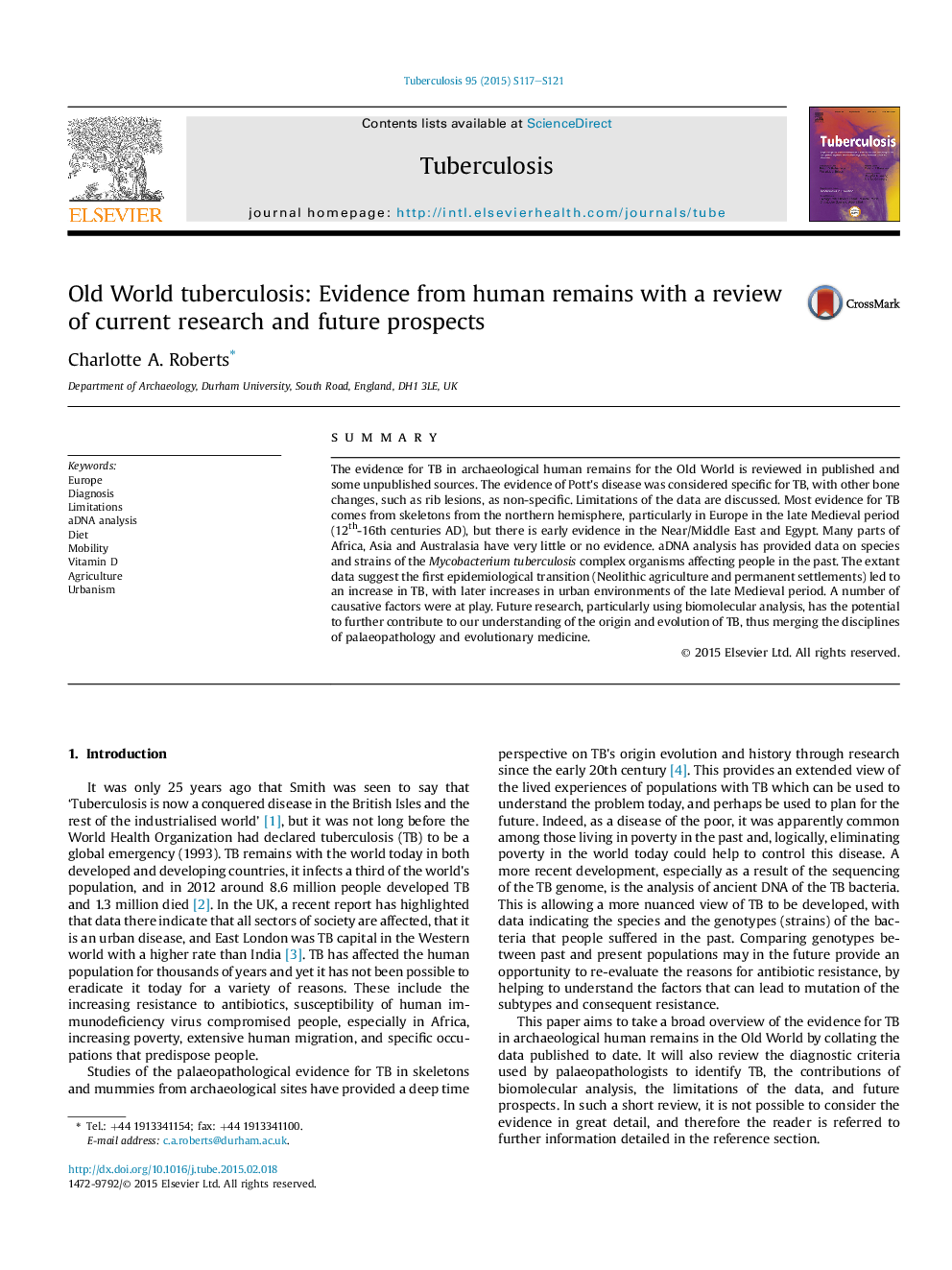| کد مقاله | کد نشریه | سال انتشار | مقاله انگلیسی | نسخه تمام متن |
|---|---|---|---|---|
| 2401479 | 1102343 | 2015 | 5 صفحه PDF | دانلود رایگان |
SummaryThe evidence for TB in archaeological human remains for the Old World is reviewed in published and some unpublished sources. The evidence of Pott's disease was considered specific for TB, with other bone changes, such as rib lesions, as non-specific. Limitations of the data are discussed. Most evidence for TB comes from skeletons from the northern hemisphere, particularly in Europe in the late Medieval period (12th-16th centuries AD), but there is early evidence in the Near/Middle East and Egypt. Many parts of Africa, Asia and Australasia have very little or no evidence. aDNA analysis has provided data on species and strains of the Mycobacterium tuberculosis complex organisms affecting people in the past. The extant data suggest the first epidemiological transition (Neolithic agriculture and permanent settlements) led to an increase in TB, with later increases in urban environments of the late Medieval period. A number of causative factors were at play. Future research, particularly using biomolecular analysis, has the potential to further contribute to our understanding of the origin and evolution of TB, thus merging the disciplines of palaeopathology and evolutionary medicine.
Journal: Tuberculosis - Volume 95, Supplement 1, June 2015, Pages S117–S121
